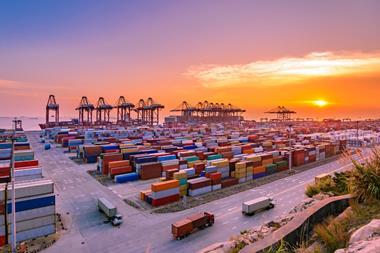Inflation is pushing up the cost of hull, machinery and cargo claims, says head of marine risk consulting
Increased commodity prices, higher labor costs and supply chain disruption have had a significant impact on marine insurance claims, according to Allianz Global Corporate Specialty (AGCS).

In a statement released yesterday (31 May 2023), AGCS reported that the shipping transport sector had “plenty of obstacles to navigate” over the next 12 months and beyond, including economic uncertainity and the rising cost of marine claims.
The insurer highlighted that an analysis of close to 250,000 marine insurance industry claims showed that fire was the most expensive cause of loss, accounting for 18% of the value of all claims analysed in 2022.
AGCS’ global head of marine risk consulting Rahul Khanna said inflation was pushing up the cost of hull, machinery and cargo claims.
And Régis Broudin, global head of marine claims at AGCS, explained that the price of steel, a key cost driver in hull claims, increased sharply post-pandemic, as did spare parts.
“Shortages and delays in obtaining replacement parts have also led to longer stays in repair yards while labor shortages have also increased costs,” he added.
“This comes on top of the increased expense of dealing with large vessels, which face higher costs for repairs, salvage and towing.”
Incidents
Meanwhile, AGCS reported that the British Isles saw 679 cases of shipping casualties or incidents out of 3,032 globally in 2022.
Read: Briefing – Industry has fight on its hands despite economic boost
Read: Rising vehicle and residential thefts pose risk to policyholder costs – AA Insurance Services
Explore more risk management content here or discover other news stories here
Machinery damage or failure accounted for 1,478 incidents worldwide – of these incidents, fire was one of the leading causes as 209 were reported, equating to a 17% increase year-on-year.
AGCS added that several factors were increasing the risk of fires at sea and on land, including new types of cargo being transported on vessels such as electric vehicles (EVs) and battery-powered goods.
It said potentially highly flammable lithium-ion (Li-ion) batteries posed a ”growing risk for container shipping and car carriers”.
“Most ships lack the suitable protection, detection and firefighting capabilities to tackle such fires at sea,” Khanna said.
“Attention must focus both on pre-emptive measures and emergency plans to help mitigate this peril such as adequate crew training and access to appropriate firefighting equipment or improving early detection systems.
“Purpose-built vessels for transporting EVs would [also] be advantageous.”
He added: “Failure to properly declare, document and pack hazardous cargo can contribute to blazes or hamper firefighting efforts.
“Labelling a cargo as dangerous is more expensive. Therefore, some companies try to circumvent this by labelling fireworks as toys or Li-ion batteries as computer parts, for example.”
AGCS stated container carrying capacity has doubled in the last 20 years.
To address this issue in reporting systems, Khanna said that “unified requirements and penalties for mis-declared hazardous cargo would be welcomed”.
Global losses
Despite the increase in fire risk, AGCS stated that the number of ships weighing over 100 gross tons lost over the past year dropped to the lowest level globally since it started its study 12 years ago.
A total of 38 losses of vessels were reported worldwide in 2022, compared to 59 the previous year – this represents a 65% decline in annual losses over 10 years.
“Shipping losses have sunk to the lowest number we have seen in the 12-year history of our annual study, reflecting the positive impact safety programs, trainings, changes in ship design and regulation have had over time,” said Khanna.
In 2013, 109 total losses of vessels were reported, whereas over 30 years ago, over 200 vessels were lost a year.
“While these results are gratifying, several clouds appear on the horizon”, Khanna added.
Hosted by comedian and actor Tom Allen, 34 Gold, 23 Silver and 22 Bronze awards were handed out across an amazing 34 categories recognising brilliance and innovation right across the breadth of UK general insurance.



















































No comments yet